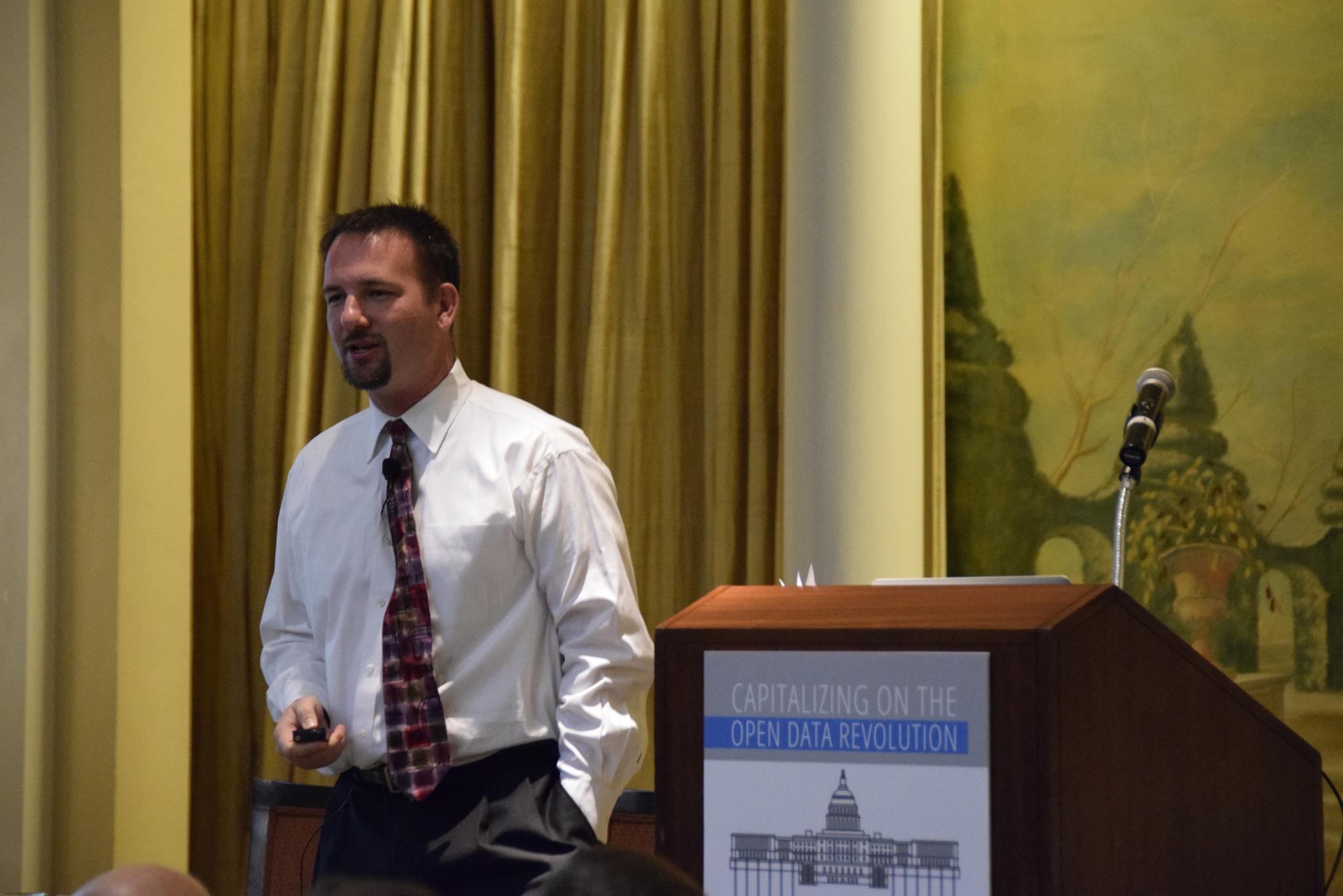At GovLoop’s Tuesday How to Optimize Your Open Data event, the morning kicked off with an animated delivery by Mike Kruger, a recent feature in our Capitalizing on the Open Data Revolution guide. For the past four years, Kruger has been working as the Director of Digital Engagement for the Department of Commerce to create a data hub known as the Trade Developer Portal. Kruger discussed the data-driven world we live in today and why it’s important to shift away from individual data projects to a more integrated, overarching data culture.
Want to create a culture of data? Kruger cited five “easy” steps you can follow. “I use quotes when I say ‘easy’ like building a house is ‘easy’ when you have plans,” Kruger said. “There still is hard work and a lot of skill required.”
Before starting out on his five-step process, Kruger stressed the importance of getting informed about by highlighting two key pieces of data policy vital to developing our data culture. The first was OMB Memo 13-13, which is the Office of Management and Budget’s Open Data Policy. According to the 2013 memo, everything that you create going forward will default to open, like spreadsheets or press releases. Basically, what this means is that you should expect to release what you are creating, and when you come across companies that are resistant to open data, reference the OMB and set your company apart by expecting to release everything your creating.
The second piece of policy comes from 2012, the Digital Government Strategy, which states that we have to improve customer service across all mediums, including digital. Both policies give you incredible pull when arguing for an open data culture.
Once you know your background, Kruger says you can follow his five-fold plan, which isn’t necessarily linear and often has overlapping steps.
Step 1: Find and Empower Internal Advocates— The tech people and data gurus in your agency are the people that are the foundation for making this data culture possible. They are the advocates interested in getting their data out and other people interested. Without them, we are missing a crucial component of the open data culture.
Step 2: Pick the Low-Hanging Fruit— Get some quick wins, and promote, promote, promote. This will draw attention to your success with open data. Something as simple as releasing some of your company or agency’s data that are locked in PDF form is enormously attractive to other companies that want to work with you and will create more buy-in.
Step 3: Create a Coherent Strategy— This is one of the more difficult steps. This requires you to talk about all of your organization’s data and everything that has been created. Ask yourself what your overall goal is, and then decide what the tactics are to achieve it.
Step 4: Find Executive Sponsorship— At some point, you are going to need monetary backing to hire more tech people and to expand. There is not one successful industry in the 21st century that doesn’t use and need data.
Step 5: Measure and Highlight Real Change— Highlight your successes and changes as you work towards your goals. Also, measure these successes in a manner that makes sense to your products. Sometimes, failures can lead to successes, and it’s important to note these as well.
In the following Q&A session, one audience member asked, “How do you find the most valuable data and what people want?”
“We talked to our data owners and asked, ‘Who calls you the most and is the most annoying person on the phone?’” Kruger said. “Ask your data owners, ‘What if we make that data open so they stop calling you?’ Talk to your data owners, find out who’s annoying, make them go away, and everyone will love you.”
You can see Kruger’s full presentation here.
See all the recaps of GovLoop’s recent Open Data training event:





[…] CREATING A DATA CULTURE WITH THE DEPARTMENT OF COMMERCE […]